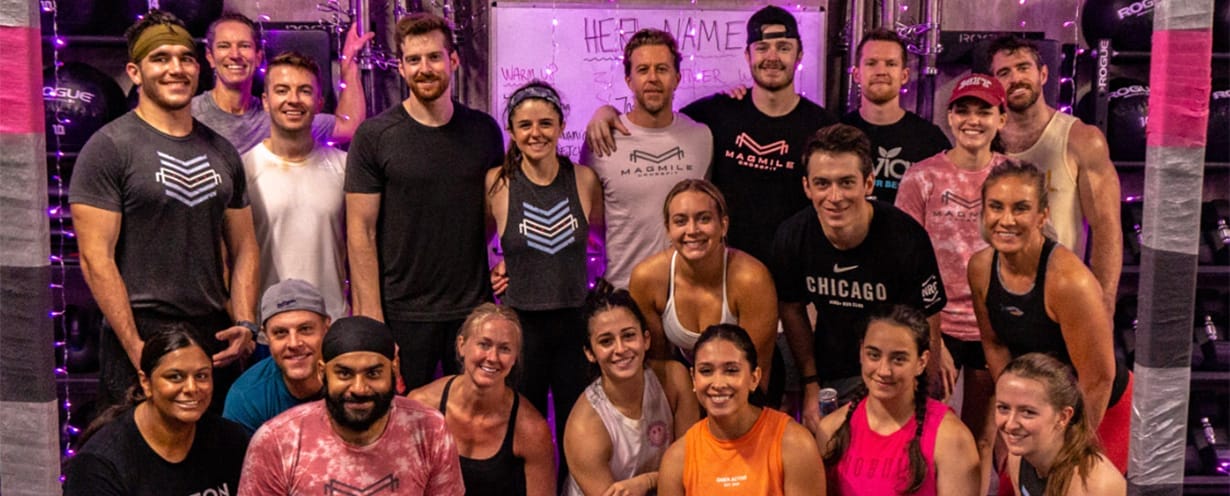-
01
IntroGet started by booking your free intro call.
-
02
PlanSchedule your first visit.
-
03
ResultsStart training, follow your program and get results.
Getting started is easy at the best gym in River North
At MagMile CrossFit in River North, Chicago, we believe that the path to reaching your goals starts with an actionable plan. Talk with one of our expert coaches to learn more about which program style will fit your lifestyle. Join our gym to get results that last.
Fill out the form below to get started
Take the first step towards getting the results that you want
KJ'S STORY
MagMile CrossFit is an environment that encourages growth, technique, and challenging yourself - but without any intimidation or fear of failure.
MIKE’S STORY
This has been my home away from home over the last 3 years. The environment is so positive, and the workouts always leave me feeling accomplished.
KIRI'S STORY
One of the best things about MMCF is how welcoming all the coaches and members are. Right after my first class I signed up because of the environment.
DOUG'S STORY
I'm way fitter, stronger and more flexible than I was a year ago. I love the fact that we all respect each other for showing up and doing the work.
JON'S STORY
MMCF has been great for me, and I know the coaches are mindful of the range of skills, ages and fitness levels of all the athletes.
Achieve your goals with us
Take the first step in becoming your own success story.
Fill out the form below to get started
Take the first step towards getting the results that you want

